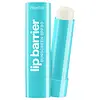What's inside
What's inside
 Key Ingredients
Key Ingredients

 Benefits
Benefits

 Concerns
Concerns

 Ingredients Side-by-side
Ingredients Side-by-side

Caprylic/Capric Triglyceride
MaskingPolyisobutene
Diisostearyl Malate
EmollientEthylhexyl Methoxycinnamate
UV AbsorberHomosalate
Skin ConditioningPentaerythrityl Tetraisostearate
EmollientEthylhexyl Salicylate
UV AbsorberButyl Methoxydibenzoylmethane
UV AbsorberSilica Dimethyl Silylate
EmollientDipentaerythrityl Tri-Polyhydroxystearate
EmollientAroma
Polyester-7
Skin ConditioningSqualane
EmollientNeopentyl Glycol Diheptanoate
EmollientPhenoxyethanol
PreservativeBHT
AntioxidantBisabolol
MaskingTocopheryl Acetate
AntioxidantAscorbyl Tetraisopalmitate
AntioxidantEthylhexylglycerin
Skin ConditioningCaprylic/Capric Triglyceride, Polyisobutene, Diisostearyl Malate, Ethylhexyl Methoxycinnamate, Homosalate, Pentaerythrityl Tetraisostearate, Ethylhexyl Salicylate, Butyl Methoxydibenzoylmethane, Silica Dimethyl Silylate, Dipentaerythrityl Tri-Polyhydroxystearate, Aroma, Polyester-7, Squalane, Neopentyl Glycol Diheptanoate, Phenoxyethanol, BHT, Bisabolol, Tocopheryl Acetate, Ascorbyl Tetraisopalmitate, Ethylhexylglycerin
Ricinus Communis Seed Oil
MaskingPetrolatum
EmollientC12-15 Alkyl Benzoate
AntimicrobialOlea Europaea Fruit Oil
MaskingBis-Diglyceryl Polyacyladipate-2
EmollientSynthetic Wax
AbrasiveEthylhexyl Methoxycinnamate
UV AbsorberButyl Methoxydibenzoylmethane
UV AbsorberDi-C20-40 Alkyl Dimer Dilinoleate
Skin ConditioningMicrocrystalline Wax
Emulsion StabilisingButyrospermum Parkii Butter
Skin ConditioningMacadamia Ternifolia Seed Oil
EmollientC10-30 Cholesterol/Lanosterol Esters
EmulsifyingZinc Oxide
Cosmetic ColorantPhenoxyethanol
PreservativeSimmondsia Chinensis Seed Oil
EmollientBisabolol
MaskingTocopheryl Acetate
AntioxidantEthylhexylglycerin
Skin ConditioningLinoleic Acid
Cleansing1,2-Hexanediol
Skin ConditioningCaprylyl Glycol
EmollientGlycine Soja Oil
EmollientAllantoin
Skin ConditioningBHT
AntioxidantPersea Gratissima Oil
Skin ConditioningOleic Acid
EmollientTriethoxycaprylylsilane
Propylene Glycol
HumectantHoney Extract
HumectantPalmitic Acid
EmollientWater
Skin ConditioningStearic Acid
CleansingGlycerin
HumectantLinolenic Acid
CleansingIsobornyl Acetate
MaskingCalendula Officinalis Flower Extract
MaskingChamomilla Recutita Flower Extract
MaskingFucus Vesiculosus Extract
EmollientTriticum Vulgare Bran Extract
Skin ConditioningArachidic Acid
CleansingBehenic Acid
CleansingPunica Granatum Flower Extract
Skin ConditioningPolyglyceryl-3 Diisostearate
EmulsifyingTocopherol
AntioxidantCitric Acid
BufferingPotassium Sorbate
PreservativeSodium Benzoate
MaskingRicinus Communis Seed Oil, Petrolatum, C12-15 Alkyl Benzoate, Olea Europaea Fruit Oil, Bis-Diglyceryl Polyacyladipate-2, Synthetic Wax, Ethylhexyl Methoxycinnamate, Butyl Methoxydibenzoylmethane, Di-C20-40 Alkyl Dimer Dilinoleate, Microcrystalline Wax, Butyrospermum Parkii Butter, Macadamia Ternifolia Seed Oil, C10-30 Cholesterol/Lanosterol Esters, Zinc Oxide, Phenoxyethanol, Simmondsia Chinensis Seed Oil, Bisabolol, Tocopheryl Acetate, Ethylhexylglycerin, Linoleic Acid, 1,2-Hexanediol, Caprylyl Glycol, Glycine Soja Oil, Allantoin, BHT, Persea Gratissima Oil, Oleic Acid, Triethoxycaprylylsilane, Propylene Glycol, Honey Extract, Palmitic Acid, Water, Stearic Acid, Glycerin, Linolenic Acid, Isobornyl Acetate, Calendula Officinalis Flower Extract, Chamomilla Recutita Flower Extract, Fucus Vesiculosus Extract, Triticum Vulgare Bran Extract, Arachidic Acid, Behenic Acid, Punica Granatum Flower Extract, Polyglyceryl-3 Diisostearate, Tocopherol, Citric Acid, Potassium Sorbate, Sodium Benzoate
Ingredients Explained
These ingredients are found in both products.
Ingredients higher up in an ingredient list are typically present in a larger amount.
BHT is a synthetic antioxidant and preservative.
As an antioxidant, it helps your body fight off free-radicals. Free-radicals are molecules that may damage your skin cells.
As a preservative, it is used to stabilize products and prevent them from degrading. Specifically, BHT prevents degradation from oxidation.
The concerns related to BHT come from oral studies; this ingredient is currently allowed for use by both the FDA and EU.
However, it was recently restricted for use in the UK as of April 2024.
Learn more about BHTBisabolol is famous for its skin soothing properties. It does this by blocking inflammatory signals, helping to reduce your body's reaction to irritation.
This ingredient also interferes with the process of hyperpigmentation. This can help with reducing dark spots and uneven tone.
Bisabolol is an antioxidant. Antioxidants help fight free-radicals. Free-radicals are molecules that may damage your skin cells. By fighting these free-radicals, Bisabolol may slow down signs of aging.
Studies have shown Bisabolol to have antimicrobial properties and may be a fungicide. These properties help preserve a product's shelf life.
All these properties makes bisabolol a great skin barrier helper ingredient.
Bisabolol also helps the absorption of other ingredients.
Note: Synthetic Bisabolol has been shown to be less effective.
Learn more about BisabololAlso known as Avobenzone, this ingredient is a chemical sunscreen filter that provides protection in the UV-A range.
Avobenzone is globally approved and is the most commonly used UV-A filter in the world.
Studies have found that avobenzone becomes ineffective when exposed to UV light (it is not photostable; meaning that it breaks down in sunlight). Because of this, formulations that include avobenzone will usually contain stabilizers such as octocrylene.
However, some modern formulations (looking at you, EU!) are able to stabilize avobenzone by coating the molecules.
Avobenzone does not protect against the UV-B range, so it's important to check that the sunscreen you're using contains other UV filters that do!
The highest concentration of avobenzone permitted is 3% in the US, and 5% in the EU.
Learn more about Butyl MethoxydibenzoylmethaneEthylhexyl Methoxycinnamate is an organic compound that provides UVB protection. It often goes by the more common name of octinoxate. It is created from methoxycinnamic acid and 2-ethylhexanol.
Ethylhexyl Methoxycinnamate absorbs UVB rays with wavelengths between 280-320 nm. UV absorbers protect your skin by using chemical reactions to convert UV rays into heat and energy.
UVB (290-320 nm) rays emit more energy than UVA rays. They are capable of damaging DNA, causing sunburns and are thought to be linked to skin cancer.
The state of Hawaii has banned sunscreens containing octinoxate due to its potential impact on coral reefs. More research is needed to bridge gaps in this research. The European Union allows higher levels of octinoxate in sunscreens than the US and Australia.
Ethylhexyl Methoxycinnamate is oil soluble. It is not stable and may lose efficacy when exposed to sunlight.
Learn more about Ethylhexyl MethoxycinnamateEthylhexylglycerin (we can't pronounce this either) is commonly used as a preservative and skin softener. It is derived from glyceryl.
You might see Ethylhexylglycerin often paired with other preservatives such as phenoxyethanol. Ethylhexylglycerin has been found to increase the effectiveness of these other preservatives.
Phenoxyethanol is a preservative that has germicide, antimicrobial, and aromatic properties. Studies show that phenoxyethanol can prevent microbial growth. By itself, it has a scent that is similar to that of a rose.
It's often used in formulations along with Caprylyl Glycol to preserve the shelf life of products.
Tocopheryl Acetate is AKA Vitamin E. It is an antioxidant and protects your skin from free radicals. Free radicals damage the skin by breaking down collagen.
One study found using Tocopheryl Acetate with Vitamin C decreased the number of sunburned cells.
Tocopheryl Acetate is commonly found in both skincare and dietary supplements.
Learn more about Tocopheryl Acetate